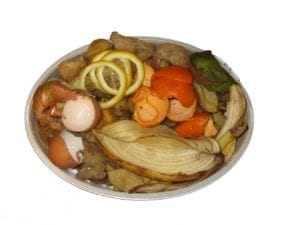Recent legislation promulgated in the United States has put caps in Massachusetts limiting the amount of food that goes to landfill. In South Africa and many other developing countries around the world no such cap exists, although these countries could potentially benefit far more from the increased energy and availability of nourishment that better food-supply-chain management would bring.
Part of the South African government’s latest round of amendments to the National Environmental Management: Waste Act, is to set guidelines for reducing the amount of waste that goes to landfill, encouraging reuse, recycling and separation at source wherever possible. This opens the way for numerous initiatives to promote a truly circular economy in South Africa.Household food waste
When it comes to food wastage, the idea that good food goes to landfill may seem counter intuitive: surely only food that’s gone bad is thrown away? But international research on the topic (see vision2020.info) shows that sell-by dates are often more arbitrary than many believe, and manufacturers’ and distributors tend to err on the side of caution when labelling. Food banks are one repository where food that is still good but past its sell-by date can be distributed to those who can’t afford to buy good food at regular supermarket prices. The argument that this practice downgrades the value of foodstuffs for markets and farmers isn’t valid. As one British government study has shown “Local authorities can realise significant savings by tackling food waste and removing this contaminate could yield as much as £3 bn more value from recyclate.” If the result of feeding hungry people is that food is devalued then perhaps subsidies could be put in place to balance the difference in the agricultural supply chain?Multiple intervention points
But that’s just looking at the problem from the household angle. Agriculture, grocery retail, food distribution, catering and hospitality, and food and drink manufacturing are all areas ripe for unique, targeted interventions.For example, sometimes food that looks unattractive or small crops are simply thrown away because they will not look good packed on a supermarket shelf. Again, food banks could serve as a repository. In fact, about 50% of the food grown annually never even gets eaten, although there are millions of people around the world who go hungry every day.
Another targeted intervention, one where South Africa already stands toe-to-toe with international peers, is to look at food packaging as a way to generate greater recyclate volumes. This is because when large volumes of plastics or cartons are collected by waste pickers, collectives or sorting agencies, it becomes more cost effective to transport and bundle, creating more value for the sorters. Not only that but at the level of supermarket chains, there are a variety of different local consulting firms able to put together packages to create more value for stores by managing food-waste streams effectively in a way that avoids landfills and improves a company’s corporate social investment portfolio. Energy from foodWhat with South Africa’s latest round of load shedding and general electricity supply difficulties all over the continent, another potential method for diverting food waste before it reaches landfill is to use it for energy. One way this can be done is to use the local wastewater treatment works’ anaerobic digestion to process foodstuffs along with sewage.
This process causes the release of methane, which can be captured at the works and converted to energy for use by that plant for its machinery. If food waste goes to landfill on the other hand, that methane is released into the atmosphere and becomes a harmful greenhouse gas. Compost
Food waste is the biggest contributor to landfill volumes, costing governments billions to store on land that could be used more profitably. Using food waste for compost is one of the most natural, effective, easy ways to manage food waste and it results in homeowners’ having healthier gardens – although compost heaps do attract vermin. A way to avoid the rat problem associated with many compost heaps is again to consider combining waste streams. By mixing food waste with dewatered sludge from wastewater treatment works, a high quality fertiliser can be generated for farmers. Transportation costs can also be reduced because many wastewater treatment works are cited on the outskirts of metropolitan limits, on or near farmland.
In summary, there are many ways to begin to tackle the problem of food waste to landfill, and with the South African government’s new emphasis on creating a green economy, now is the most opportune time to start these initiatives.








